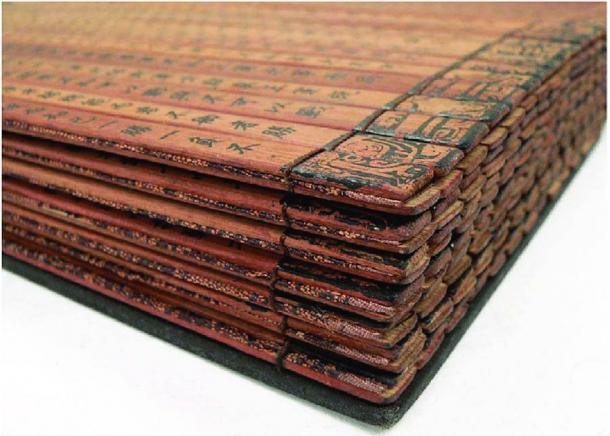The oldest known evidence referring to a “celestial aurora event” from a section of the famous Bamboo Annals Chinese text dated to the 10th century BC has been researched by scientists from Nagoya University in Japan, located. The Bamboo Annals are a chronicle of ancient China from the earliest “legendary times” (c. 2400 BC) right up till their composition around 299 BC. The findings of the new Chinese celestial aurora study have been published in the journal Advances in Space Research .
The Chinese Celestial Aurora Event, Three Thousand Years Ago

“Historical auroral reports extend our knowledge of solar eruptions and long-term solar variability in the millennial time scale beyond the chronological coverage of instrumental observations, in the decadal to centennial time scales,” said Nagoya University researcher and lead author Hisashi Hayakawa and co-author Dr. Marinus Anthonyvan der Sluijs from the University of Pennsylvania Museum of Archaeology and Anthropology.
- Scientists Bring Global Pole Shift Fears Into Focus
- The Life and Death Power of Eclipses in the Ancient World
This 3,000-year-old event has both historical and scientific value. To begin with, the location of the source implies a particularly powerful geomagnetic storm . The authors have delved into the science of this phenomenon, explaining that solar storms that interact with the atmosphere produce distinctive radioactive isotopes. Celestial auroras, as evidenced by the famous Northern Lights are streaks of reddish or green light in the sky, particularly near either of the poles. They are formed through the interaction of charged particles from the sun, with atoms in the upper atmosphere, reports The Independent .
What is particularly interesting is that these distinctive radioactive isotopes were found in high concentrations in ancient Chinese geological sediment. This indicated solar activity similar to the 17th century Maunder Minimum or the prolonged sunspot minimum, which was a period between 1645 and 1715 when sunspots became extremely rare. Incidentally, this coincided within the time frame of the Little Ice Age , a long-protracted period of lower-than-average European temperatures (scientists have often tried to find a correlation between the reduced solar activity and the ensuing effect on temperature and climatic cooling, but this is still not a fully accepted theory).

The ancient Chinese celestial aurora sighting was found in the Bamboo Annals pictured here, and then confirmed using high-tech sediment analysis. ( ResearchGate)
Oldest Recorded Celestial Event Winner: China
In the case of the 10th century BC event in China, there was a lull in solar activity between 810 and 720 BC, known sometimes as the Grand Minimum, reports IFL Science . Depictions of auroras start appearing in Assyrian and Babylonian texts shortly afterwards , and there are vague references to this event in the Bible too. If the current research is accurate, the Assyrian record of an aurora event, which was till now the oldest such recorded event, would be predated by 300 years!
“The finding comes barely two years after that of the previous holder of this distinction — several records of candidate aurorae inscribed on cuneiform tablets by Assyrian astronomers in the period 679-655 BCE,” the authors said. “Some scientists have also associated Ezekiel’s vision , which is now dated to 594 or 593 BCE, with auroral visibility in the Middle East, but caveat must be noted for its reliability.”
This account from 977 or 957 BC in the Bamboo Annals had been investigated earlier too for the possibility of astronomical significance, but the underlying interpretation has been that this is a reference to a comet and not an aurora. Additionally, the date and location have been always eluded previous researchers, particularly because there are two versions of the Bamboo Annals, which refer to this event as a fuzzy star or a five colored light in the northern sky, reports the South China Morning Post . However, the scientists suspect it is Haojing, which is in today’s Shanxi province in Central China.
In the 10th century BC, the earth’s northern magnetic pole was inclined towards the Eurasian side, 15° closer to central China than today. Celestial auroras occurring in the mid latitude range, when sufficiently bright, can produce a dizzying array of colors. This study estimates that the equatorward boundary of the auroral oval would have been located at a magnetic latitude of 40°or less when the event was witnessed in ancient China.
This revisionist find is also particularly relevant for climate and space scientists, as it models long term and short term solar activity patterns, space variability, and shifts in the magnetism of the pole compasses.